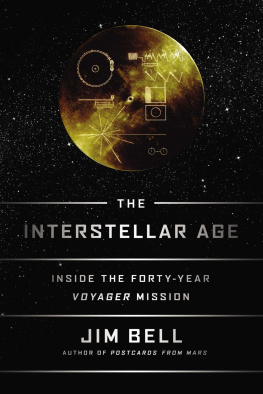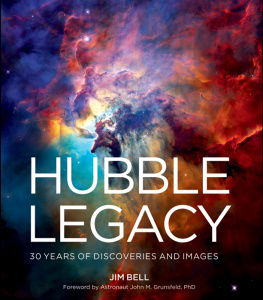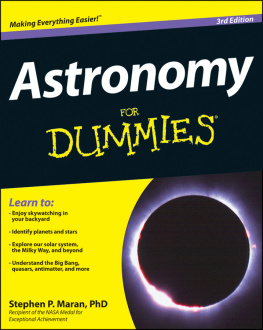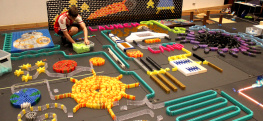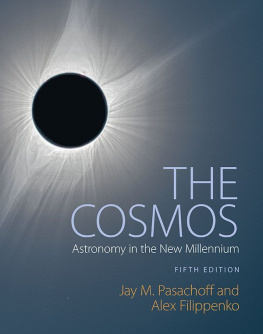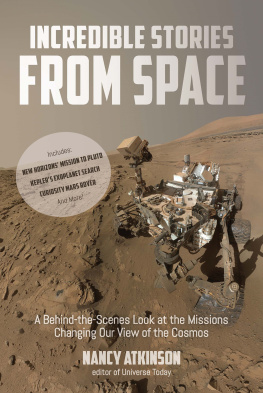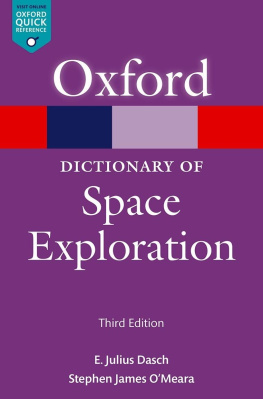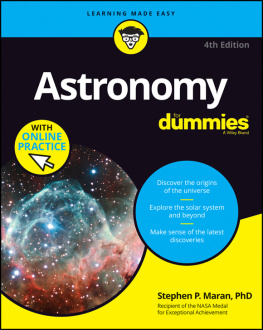From the Beginning to the End of Time, 250 Milestones in the History of Space & Astronomy
STERLING and the distinctive Sterling logo are registered trademarks of Sterling Publishing Co., Inc.
Text 2013, 2018 James F. Bell III
All rights reserved. No part of this publication may be reproduced, stored in a retrieval system, or transmitted in any form or by any means (including electronic, mechanical, photocopying, recording, or otherwise) without prior written permission from the publisher.
ISBN 978-1-4549-3558-2
For information about custom editions, special sales, and premium and corporate purchases, please contact Sterling Special Sales at 800-805-5489 or specialsales@sterlingpublishing.com.
sterlingpublishing.com
For photo credits, see .
For my many teachers and mentors, for their patience, wisdom, and insistence that we must learn from the struggles of those who came before us; and for my children and many students, who graciously put up with me constantly trying to pass that lesson on to them.
It suddenly struck me that that tiny pea, pretty and blue, was the Earth. I put up my thumb and shut one eye, and my thumb blotted out the planet Earth. I didnt feel like a giant. I felt very, very small.
Neil Armstrong
It is difficult to say what is impossible, for the dream of yesterday is the hope of today and reality of tomorrow.
Robert Goddard
Preface to the New Edition
Space is vast and ever-changing. In the five years since the first edition of The Space Book was published, new robotic space missions have been launched to a variety of solar system destinations, ongoing missions have made exciting new discoveries, hundreds of new planets have been discovered around nearby Sun-like stars, astrophysicists have discovered new ways to study the distant universe, and a panoply of future space-related missions and experiments have been approved to move forward by space agencies around the world. The landscape of space science and exploration has changed significantly as well, with small entrepreneurial aerospace companies, such as SpaceX and Blue Origin, entering the market as viable producers of their own reusable launch vehicles, and other companies developing or implementing ways to map the Earth or prospect for minerals and water on nearby asteroids using CubeSatstiny spacecraft no larger than a cereal box. It continues to be a golden age of space exploration, with no end in sight.
Ive tried to keep up with some of those changes in this second edition of the book, although, as in the first edition, it is virtually impossible to capture the full story of space. Given my admitted bias as a planetary scientist who focuses on the study of our solar system, many of the new entries in this edition are geared toward new missions that have recently been launched to study the atmospheres and interiors of Mars and Jupiter and the surface of the largest asteroid, Ceres, as well as those that will soon be launched to study the surface of Mars and Jupiters moons, Europa and Ganymede, up close. Other very recent important events and discoveries that are described here now include the enormous meteor/fireball explosion that occurred above Russia in 2013; the launch of the worlds first privately funded, citizen solar-sailing demonstration mission, the Planetary Societys LightSail-1 CubeSat; the discovery (finally!) of gravitational waves in 2016; and the thrilling announcement of the discovery of seven Earth-like planets orbiting the nearby star, called TRAPPIST-1, in 2017. Ive also included new entries covering instruments and missions being planned by my astronomy and astrophysics colleagues, such as the new, large, millimeter-wave telescope array in the Atacama Desert of South America; the soon-to-be-launched largest space telescope ever built, named after former NASA administrator James Webb, and a large follow-on telescope being planned after that, called WFIRST; and long-term plans for a possible mission to launch thousands of tiny StarChip spacecraft on a high-speed mission to reconnoiter the star system closest to the Sun: Alpha Centauri.
Throughout the rest of the book I have also provided spectacular new photographs and artwork, updates to ongoing missions, as well as details about new developments in space exploration and technology. These include the spectacular results from the New Horizons spacecrafts 2015 flyby of the Pluto system, the latest results from the still-active Mars rovers Opportunity and Curiosity, the final results and fiery end of the Cassini mission to Saturn, Voyager 1s historic departure out of the Suns magnetic field and into interstellar space, and results from the spectacular total solar eclipse viewed by millions across the United States in 2017.
But so much more has happened, and will continue to happen! Follow along, using the many (updated) links and references in the Notes and Further Reading section, and keep your eyes on the skies!
Introduction
It is basically impossible to summarize the entire history of astronomy and space exploration in just 250 milestones, but Im not going to let that stop me from trying! I work in a field that has a rich and exciting history. Chronicling that history is a daunting task, but, from the perspective of a space enthusiast who was lucky enough to pursue a career in space sciences, it is an embarrassment of riches. In the last 50 years alone, we have been witness to one of the most profound and important bursts of human exploration in history: the Space Age. People have left the planet (some are living off-planet right now!), and a dozen have walked on the Moon. Using robotic proxies and giant telescopessome launched into spacewe have been able to see, up close, the alien landscapes of all the classically known planets, visit asteroids and comets, and view the cosmos in all its glory.
All of this has been made possible because we have, as Sir Isaac Newton put it best, stood on the shoulders of giants. No appreciation for the wondrous discoveries of modern astronomy and space exploration would be complete without a thoughtful consideration of the foundations of modern science and experimentation that were built by our ancestors. Many of their achievements were attained at great personal or professional cost, and many others were not recognized as important until decadeseven centurieslater. Where it has been impossible or impractical to recognize the specific individuals responsible for these contributions, I have included entries that at least acknowledge the importance of key groups of people in setting the stage for future achievements. Examples include the sky maps still preserved in the caves of some of the earliest humans; the Sumerians contributions to the birth of cosmology 5,000 to 7,000 years ago; the still-mysterious Stone Age civilizations responsible for constructing ancient sky observatories like Stonehenge; the careful chroniclers of celestial events from the Chinese Xi, Shng, and Zhu dynasties (2100 BCE 256 BCE ); and the various schools of mathematics and astronomy from early Egyptian, Indian, Arab, Persian, and Mayan societies that have exerted such a strong influence on modern astronomy, astrophysics, and cosmology.


